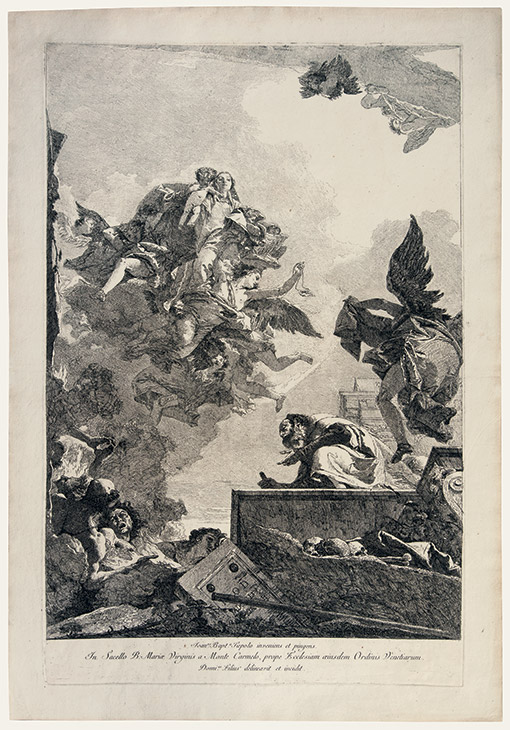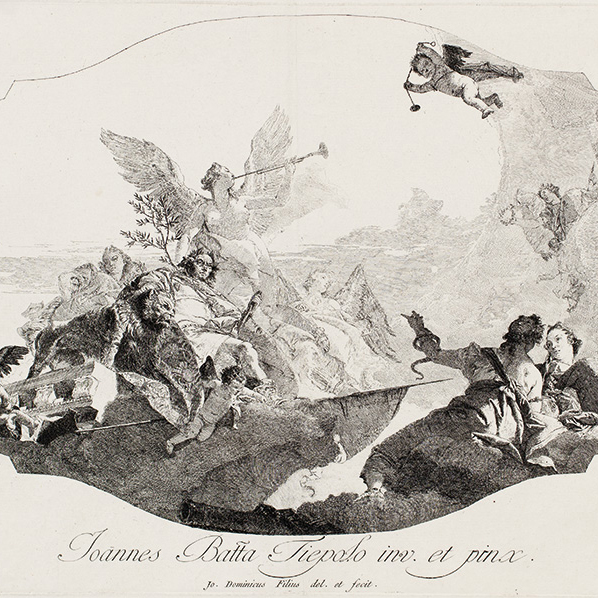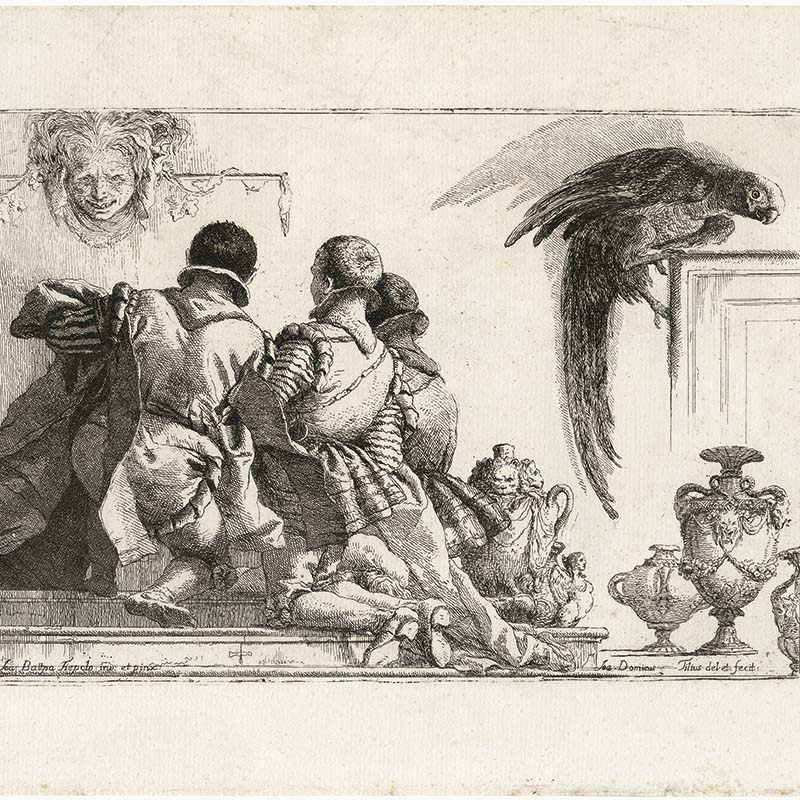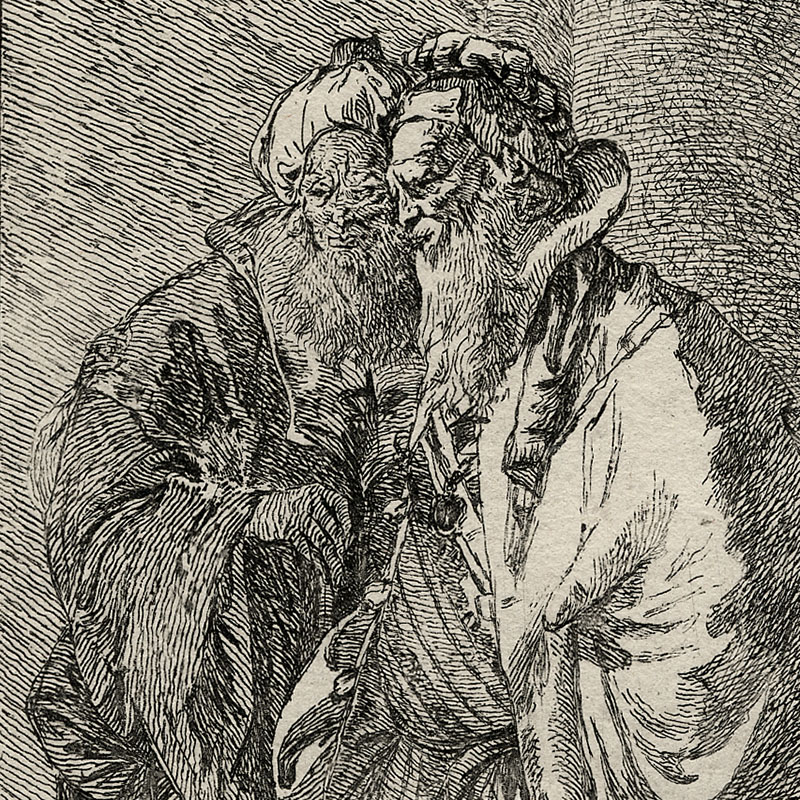Giovanni Domenico Tiepolo
Venice 1727 - 1804
1749
To the platemark 605 x 400 mm; sheet 675 x 468 mm
Rizzi 1971,98 I/II; Succi I Tiepolo: Virtuosismo e Ironia, 1988, pag.130, n. 34 I/II
Superb, brilliant impression, in the rare first state of two, before the addition of the number 40 in the upper left corner, printed on laid paper of the XVIII century.
Sheet of great freshness with the subject visible on the verso.
In perfect conditions, with the platemark sharp and clean showing remains of ink has in pristine impression; some traces of dust in the white edges and slight fold at the center, which can be appreciated especially on the verso, as is usually found in prints of this size.
Regular margins all around. This sheet is searched for quality and excellent preservation.
It is one of the most refined and important engravings of Giovanni Domenico.
The subject is related up the central compartment of the Scuola del Carmine in Venice that Giovanni Battista had finished in 1749.
S. Simone Stock appears struck by the apparition of the Madonna del Carmelo that promises relief from the torments to the souls in Purgatory and offers to the Saint the scapular to help the living to reach salvation.
This etching was mentioned by Mariette in the Index with the description L’Altro sofitto dipinto in Chiesa della Madonna del Carmine con molte figure and by Zanetti in the work Stampe tratte da pittura di Giovanni Battista Tiepolo.
The inscription on the stone slab at the bottom should be read: MDCCXLIX, date of execution of the etching, and not MDCCLIX, as proposed by Rizzi (1971) and Russel (1972).
Reference:
Diane Russel Rare etchtings by Giovanni Battista and Giovanni Domenico Tiepolo, National Gallery of Washington,1972, n.94, pag. 115 I/II; Rizzi, 1971, n. 28 I/II.
Information on the master
Domenico was born in Venice, studied under his father, and by the age of 13 was the elder Tiepolo's chief assistant. By the age of 20, he was producing his own work for commissioners. He assisted his father in Würzburg, decorating the famous stairwell fresco, in Vicenza at the Villa Valmarana in 1757, and in Madrid at the palace of Charles III.
His painting style developed after the death of his father in 1770, at which time he returned to Venice, and worked there as well as in Genoa and Padua. His painting, though keeping the decorative influence of his father, moved from its spatial fancy and began to take a more realistic direction. His portraits and scenes of life in Venice are characterized by movement, colour, and considered composition.
Many of Domenico's works are drawings, and as his father, he was a fine draftsman and a competent etcher. He produced 104 sketches of Punchinello, the standard character of the commedia dell'arte, a physically deformed clown. These were created as Entertainments for the Children, and attempted to poke fun at the pretensions and behaviour of the viewer.
Other works of the master



